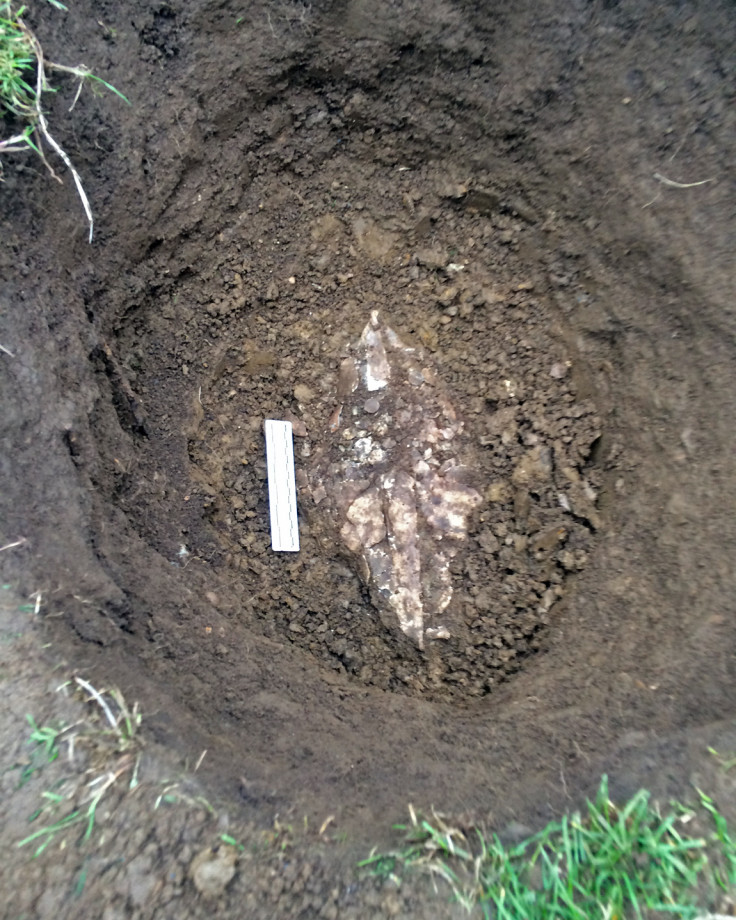Treasure hunters find Anglo-Saxon silver coins worth £1m in Buckinghamshire
Metal detector enthusiasts found more than 5,200 silver coins on a farm over Christmas

A group of metal detector enthusiasts has made the most of the festive period by unearthing a huge hoard of silver coins dating back to the Anglo- Saxon period on a farm near Lenborough, Buckinghamshire.
Over 100 enthusiasts from all over the UK were attending a Christmas gathering organised by the Weekend Wanderers Detecting Club on 21 December when one member discovered the hoard of 5,251 (and a half) silver coins buried 2ft down in a field.
The hoard was buried in a metal container. A Buckinghamshire council archaeologist who had been invited on the expedition was able to help excavate the coins.

"The metal detectorists weren't expecting to find such a huge hoard, on some days you find very little, sometimes you find many individual items," Brett Thorn, keeper of archaeology at Buckinghamshire County Museum told IBTimes UK.
"This is one of the largest hoards of Anglo Saxon coins ever found in Britain, and when the coins have been properly identified and dated, we may be able to guess at why such a great treasure was buried."
For now, the coins have been sent to the British Museum to be cleaned, analysed and then identified. Next, a coroner will decide if the coin hoard is legally considered to be "treasure".
If the hoard is considered to be treasure, than museums will have an opportunity to buy it. But only museums local to the area or a national museum will be allowed to purchase the coins for its collection.
"We acquire treasure items all the time and they're usually a couple of hundred pounds that we raise through local grants. But this is much bigger than that. In the museum collection we have over 4,000 Roman coins, but only about 100 Anglo- Saxon coins," said Thorn.
"We know that there was a royal mint in Buckingham operated on and off in the late Anglo- Saxon times and we have a single coin that is similar to the ones that were found."
While it is not yet known whether the coins were made at the Anglo-Saxon mint in Buckinghamshire, preliminary analysis of the silver coins shows that they came from the reigns of two Anglo-Saxon kings: Ethelred the Unready (978-1016 CE) and King Cnut (more commonly known as Canute – 1016-1035 CE).
Peter Welch, founder of the Weekend Wanderers Detecting Club, says that the coin hoard find is one of the most successful in the club's history, which spans 25 years.

"The dig started at 9:30am and around 10am that's when someone came and alerted me that a hoard had been found and that I needed to come quickly. It took us the whole day to excavate the steel container from the ground," he told IBTimes UK.
"At first we thought they were mirrors, as usually when you see a coin that's been in the ground for many years and turned over and moved through the soil, you see various fine scratchings on it under a microscope.
"But because these coins were in a container, they weren't moved at all and the person who put them in the ground was the last person to touch them."
According to estimates made using the Seaby's Coin Catalogue, an annual book that valuates coins found in England, the club believes each silver coin could be worth about £250 – making the horde worth £1m in total. Although it could be more valuable, as the some of the coins are larger than others.
Welch, who offers metal detecting days out and metal detecting holiday packages, says that nowadays many archaeological finds are being made by metal detectorists in the UK.
"Metal detecting has been going on for over 40 years in this country and as technology has developed, metal detectors have become more sophisticated and we have the chance to find more discoveries than ever before," he said.
"The main reason that finds are being made in this country is that farmers are giving us permission to find stuff, so we need as many farmers and land owners as possible to contact us so that we can discover what lies beneath the ground."
According to the Treasure Act 1996, any items found in England and Wales is the property of the owner of the land it was found on. However, metal detector enthusiasts often come to agreements with landowners to split the revenue from the sale of treasure they find. However, if the coroner declares the find to be "treasure", the items belong to the Crown. Museums will then raise funds to buy the items, and only if no museum buys the treasure can the landowner, or its finder, keep it.
© Copyright IBTimes 2025. All rights reserved.






















